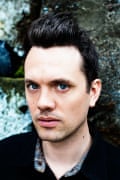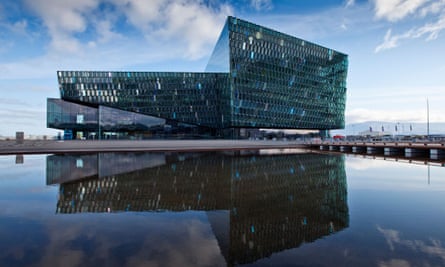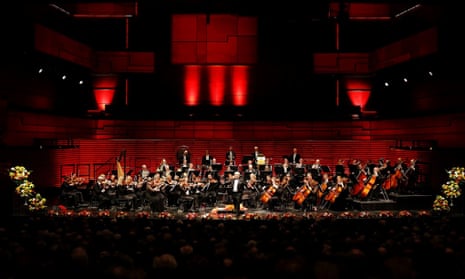The flourishing of musical life in Iceland is often talked about, but one of the main reasons for it is often overlooked. It shouldn’t be, though. When you listen to and watch an outfit such as Sigur Rós, you’ll notice that many of the techniques associated with the band and their lead singer, Jónsi, such as using a bow on his guitar, or the use of different singing registers, relate to his education in classical music and, more importantly, to the willingness to employ classical techniques in a rock context.
But Jónsi isn’t simply a classical musician who decided he’d make more money making rock music. As an Icelander, the tightly controlled divisions between “classical” and “popular” musics that, certainly in the last century, we have grown within most of Europe, have never really applied. Indeed, I think pretty much every classical musician I’ve met there plays in a rock band of some kind too.
Take Kjartan Ólafsson, the high-minded artistic director of one of Iceland’s most vibrant contemporary classical music festivals, Dark Music Days, which takes place at the end of the month. An experimental composer and musicologist with a specialised academic interest in the application of artificial intelligence to music, Ólafsson still plays weekly in his amateur heavy metal band.
Most of the members of Sigur Rós studied with Ólafsson and his colleagues on the music faculty of the Icelandic Academy of the Arts. Other former pupils include Daníel Bjarnason and Valgeir Sigurdsson, who together with their New York-based colleague Nico Muhly founded the pioneering record label Bedroom Community. Like Sigur Rós, but in reverse, almost all the composers and musicians represented by Bedroom Community share a sense that “serious” music has as much to learn from the world rock and pop as the reverse. This relates to packaging and presentation as well as musical techniques.

Barely a week passes, of course, without mention of a premiere of Muhly’s music somewhere in the world, but the international profiles of the other two are rising fast — particularly Daníel Bjarnason, whose cleverly crafted compositions use techniques and structures from electronic music to blur the lines in writing for more traditional ensembles. His music is easily accessible and dynamic, but also uses complex techniques that reward skilled musicianship in playing and listening.
One talks of “international profile” in such a context as a measure of serious artistic reach, but I’ve often found with Icelandic musicians that its their strong sense of local identity which really drives them. Despite the vast international following attracted by such artists Björk and Jónsi, most of them are primarily interested in serving their own cultural community, which isn’t populous enough for them to be treated like “stars” in the modern, remote sense associated with the rest of the music industry. One gets the feeling that the need for musical activity is deeply rooted in the culture itself, rather than mediated through the music industry, on the one hand, or by establishment notions of high art on the other.

There’s also more communal attitude to making music. One of the most interesting manifestations of this is a collective of composers known as SLÁTUR. The name is an acronym for something like “society of artistically obscure composers in Reykjavik”, but also relates to a particular kind of Icelandic tripe sausage. I first came across the group at last year’s Tectonics festival, where they performed both together and separately. One of the most striking pieces was by member David Brynjar Franzson. Entitled Longitudinal study #2, the piece consists of two circles of string players making extremely quiet gestures (such as bows drawn across the wooden body of the instruments, or blowing into the f-holes). The audience were asked to remove their shoes and were then free to circulate among the performers. Because the variation in sound quality was so slight, and you needed to prick up your ears so much to hear the music at all, much of the sense of the piece’s structure came from the process of moving around the room. The auditorium space was sensibly part of the life of the music, in that sense.

Tectonics and now Dark Music Days both take place in Reykjavik’s new concert hall, Harpa, a rather dazzling explosion of reflected light on city’s harbour front. The hall has made a huge impact on the island’s classical music life, giving the Iceland Symphony Orchestra their first proper home, and providing purpose-built venues for the apparently endless succession of music festivals, both classical and popular, that take place in the city. It’s a wonderful place, but I’ve also heard that the huge costs of building the hall — which were, following the economic collapse in 2008, entirely born by the public purse — and consequently high costs of booking its facilities have polarised the city’s diverse music scene, driving a wedge between the experimental fringe and the rock and classical mainstreams. And given that it’s the desire to experiment in a grass-roots environment that seems to fuel the island’s extraordinary musical creativity, if true this would be a terrible shame.
In the meantime, however, and especially with initiatives like the Tectonics festival, the island’s musical weather seems both as cool and volatile as ever.

Comments (…)
Sign in or create your Guardian account to join the discussion